- Home
- Encyclopedia
- A Bank Robbery and Its Mastermind
A Bank Robbery and its Mastermind
One spring Saturday afternoon in 1933, people enjoying a treat at the Candy Kitchen in downtown Green River, Wyo., may have been some of the first to hear the strange tale of the town’s last big bank robbery. Ed Taliaferro, assistant cashier at the First National Bank next door on Railroad Avenue, said he’d been tied up and robbed. Though bank robberies and violence were well known during those Prohibition times, and Green River had once been a Hell on Wheels town, people in Green River had most likely relegated daylight bank robberies to the days of the Wild West.
It took a while for the young bank cashier’s story to sink in. The date was April 1st. Maybe it was an April Fools’ Day prank? While Taliaferro untied himself and then explained to townspeople and the police what happened, the robbers got away with $19,720 in cash, currency and travelers checks (nearly$423,000 in 2022). James O. Costin was the getaway driver and, prosecutors would later claim, masterminded the crime.
James Ormsby Costin was born in Sedalia Township, Mo. on Oct. 10, 1886. He was first arrested in Kansas City, Mo. in 1915 for grand larceny but the next grand larceny charge, in Olathe, Kan., appears to be the first for which he received a long sentence. He was a 29-year-old married man with one child and working in mines when he was arrested for stealing checks from the railroad depot in Kansas in 1916. Costin had worked for the St. Louis-San Francisco (Frisco) Railway for five years prior to this conviction but said he quit when Frisco detectives threatened to get him fired.
Of course, he claimed that another man “persuaded” him to cash some checks. He also declared the “cause of [his] downfall” to be “liquor.” Perhaps he made a more persuasive argument to the parole board than he did to the judge; though he was sentenced to one to seven years in the Kansas State Penitentiary, he was paroled after about 18 months.
Costin also continued to work for the Frisco Railway. On his World War I draft registration card, he was living in Harvey, Kan., working as an electrician for the Railroad (he wasn’t registered until September 1918, so he would likely not have been called up before Armistice Day on Nov. 11, 1918). By 1930, he and his wife, Lena, were living in Green River, Wyo. where he was working as a truck driver for the city.
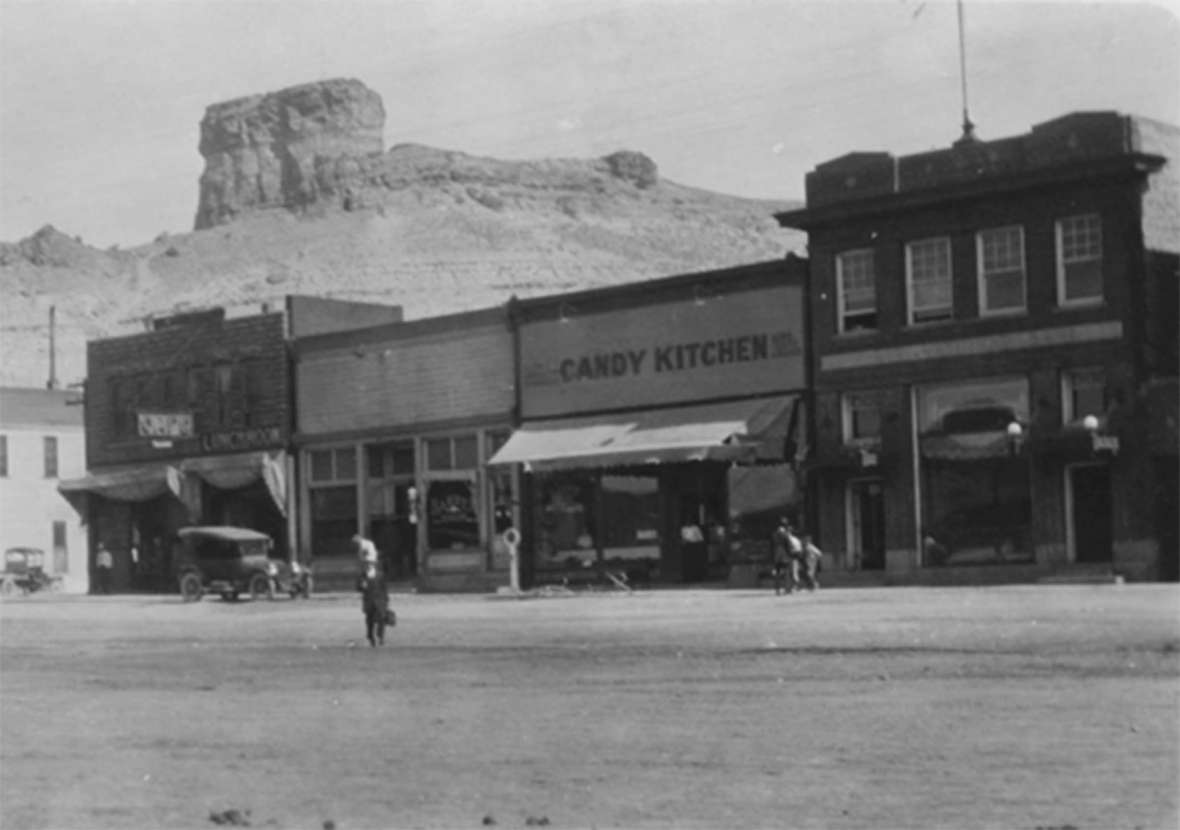
The Times
What drove Costin to rob a bank in 1933 is unknown. The Great Depression was in full swing by this time although it did not affect southwest Wyoming as much as other areas due to the continued demand for coal from the area’s mines. Costin worked as a machinist for the railroad at the time of his arrest. He could have also felt brave after having been found not guilty for grand larceny, along with Sam McCourt, in 1930. Maybe as a man nearing 50 who had thus far lived an unremarkable life, he acquired bigger ambitions after reading newspaper accounts of audacious bank robbers like John Dillinger during what historian Bryan Burrough calls the Great Crime Wave of 1933-1934.
Those two years culminated more than a decade of intense criminal activity by gangsters ingrained in the American imagination thanks to headline-makers like Bonnie and Clyde, Machine Gun Kelly and Pretty Boy Floyd dressed in style while waving their “Tommy” guns (Thompson submachine guns), murdering police and civilians and robbing banks up and down the Midwest. People all over the country saw these bank robbers as heroic Robin Hoods. Perhaps Costin found inspiration in their stories too.
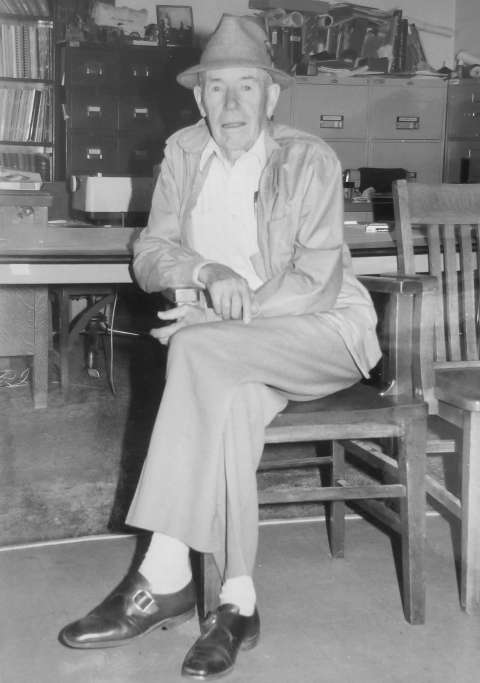
After his arrest in Kansas in 1916, Costin’s record appears clean until 1930. From 1930 to 1933, he was arrested twice. First, he was sentenced to one year and one day in the federal McNeil Island Prison in Washington State for violating the National Prohibition Act in Salt Lake City. Next came a sentence of 12 to 15 months in the Wyoming State Penitentiary in Rawlins, Wyo., for a robbery in Laramie. Since he was already living a life of crime, it may have seemed like the next logical step to rob a bank, but Costin had no idea what was waiting for him after the bank robbers got away.
The Crime
Though the First National Bank usually closed at noon on Saturdays, Ed Taliaferro later recalled that “many old timers stopped by and cashier James Chrisman, along with Taliaferro’s father, who was president of the bank, opened the doors to let the men in to talk.” Both the Chrisman and Taliaferro families, early immigrants to the area, were prominent in local business; they would have known just about everyone in town. (Ed Taliaferro was also later elected a city councilman and mayor of Green River).
The two older men left after 1:00 pm and 29-year-old Taliaferro stayed to close. A short while later, he heard a rap at the door. The stranger gained entrance by explaining to Taliaferro he wished to rent a house the bank managed. The next thing Taliaferro knew, a second man had him at gunpoint, and he realized there “wasn’t much [he] could do but let them in.” The two men were later identified as Harold Bradbury and Jim Stoddard.
They forced Taliaferro into the vault, tied him up, and emptied the vault. Although nearly $20,000 was a good haul, it was not as much as banks would normally have kept in on hand. Taliaferro also recalled years later that newly inaugurated President Franklin D. Roosevelt had temporarily closed the Depression-stressed banks to prevent runs on them, and the First National Bank in Green River had just reopened. Many other banks across the country had closed their doors permanently.
But Taliaferro was not wondering why the two men would attempt a robbery when most people assumed the bank was broke. He was more concerned with convincing the armed men to leave without locking the vault doors—he was afraid he would suffocate otherwise. After they left, he “wore out” the ropes restraining him on the safety deposit box shelves and called James Chrisman.

Bradbury and Stoddard escaped in a stolen Reo Sedan, a classic gangster getaway car. They met up with Costin in Rock Springs, Wyo., in a vehicle described as being like a panel truck. “They used to haul moonshine in it. It had special gears and was made to go fast,” Taliaferro said. Perhaps it was the same vehicle Costin had in Salt Lake City in 1930 when he was arrested for violating Prohibition.
The Trials
It may seem strange that Costin, just the getaway driver, is the man most associated with the robbery. But according to the courts, Costin was the mastermind, even, according to testimony, having gone so far as to share his plans on several occasions and try to recruit his former Sweetwater County Jail cell mate, J.W. Carson. The two men were jailed together while Costin was awaiting trial for the charge of grand larceny of “stealing $145 worth of coyote hides from the Rasmussen horse ranch, south of Green River.” He was convicted in March 1932.
Stoddard, Bradbury, and Costin were tried separately for the bank robbery. Stoddard was sentenced to five to eight years, but Bradbury was acquitted because some witnesses were unable to positively identify him. “The case of Costin’s,” however, according to the Green River Star , “was the hardest fought, Costin being the ‘brains’ and having planned the robbery but did not take part in the actual robbery.”
Called for jury selection were some significant figures in Sweetwater County, including Edward D. Crippa, future United States Senator; Ben Boschetto, who owned the deli known for Kronski sausages; and George M. Stephens, later county sheriff. In the end, no one from Green River was found fit to serve on the jury owing to “some having formed opinions, some being depositors in the bank that was robbed,” according to the Star. Carson, the former cellmate, was the star witness in Costin’s trial, leading to a conviction of grand larceny. The crime held a penalty of five to 20 years, but he was still being held in the Sweetwater County jail awaiting sentencing on his previous conviction for stealing coyote pelts.
The escape
This is when the story really gets interesting. On the morning of Monday, Feb. 12, 1934, Sheriff M.J. Dankowski woke to “see the south door of the county jail wide open, three prisoners, Costin, Howard and Ricca gone and the jailer, fast asleep.” The men had sawed through three bars in their cell in order to make their escape. Charles Stoddard, also convicted of the bank robbery and sharing a cell with the escapees, chose to remain in his cell and wait for the sheriff, who lived on the same property, to wake up. There was a $500 reward for Costin’s capture.
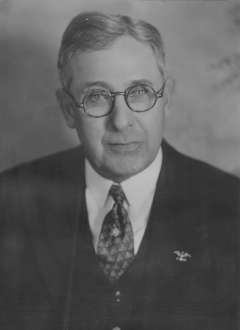
Costin’s fellow escapee, Patrick Ricca, had shared the front page of the Green River Star with the bank robbers on Jan. 12, 1934, when he was described as a transient arrested for assaulting and robbing Phil Schaaf, Sr. of the Town Pump Filling Station of $11 (after Schaaf had apparently fed him breakfast). He was later “described by his fellow cellmates as being related to orangoutangs [sic] due to his climbing about the cell walls in his bare feet.” Dan Howard was described only as being “colored” and “an old hand at jail breaking” though Ricca was the one credited with “fixing” the jailhouse doors that allowed them to escape the building after they sawed through the cell bars.
M.J. Dankowski was a newly appointed sheriff when the bank robbery took place. Great pains were taken in the newspaper to describe Dankowski and other police as “unceasingly and untiringly on the trail of the bandits,” when they were first on the run after the robbery. He traveled to Salt Lake City and Ogden, Utah as well as Pocatello, Idaho and Lander, Wyo. chasing down leads before the bandits were finally arrested in Laramie. It must have been incredibly frustrating and embarrassing for Dankowski when his prisoners escaped, but the papers placed the blame squarely on the snoozing jailer.
A kidnapping
Dankowski, assisted by County Commissioner William Evers, soon caught up with Costin and re-arrested him in Denver in March—but the story still does not end there. The newspapers reported that Costin had been “tracked from place to place in Denver, first among colored folks and then from gangland’s hiding place to hiding place.” However, after having been transported to the Wyoming State Penitentiary, Costin told Warden A.S. Roach that he had in fact been kidnapped in Denver! He said, “two men kidnapped him from his hiding place and held him captive for two days and nights in a ‘shakdown’ (sic) attempt to get $5,000 from him.”
In the same edition of the Green River Star newspaper, it was reported that Costin was suing Mike Kosaris, also known as “Pocatello Mike,” for stealing his share of the profits from a business they reportedly ran together selling beer, cigars and lunch called the Ye Copper Stein at 110 Grand Avenue in Laramie. Perhaps he sued in civil court to get the money he needed to pay a criminal attorney!
The kidnapping case “held as ‘serious’” and went to trial in Denver, “despite the fact the victim was a fugitive Wyoming convict.” It was the first case ever brought to federal court in Colorado under the recently passed Federal Kidnapping Act of 1932 (known as the “Lindbergh Law” due to its inspiration by the sensational kidnapping of toddler Charles Lindbergh that same year).
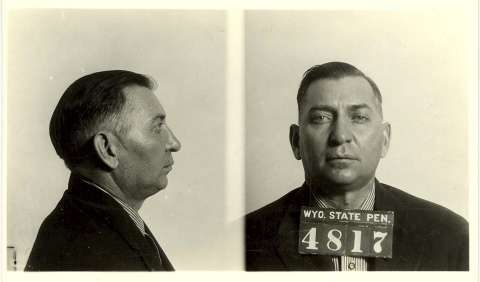
Costin was transported to Denver by “civilian guard” M.E. Pickett; the Wyoming State Penitentiary requested $108.45 reimbursement from the federal government for his transport. In Denver he testified that Glenn Cochran, Joseph Brinnick and Maynard D. Eaker had held him and “demanded money from him on the threat of turning him over to police.” Of course, Costin had no money on him since he had just escaped from jail. Although the maximum sentence could be life (or possibly death) under the law, Cochran and Eaker were each sentenced to 11 years in Leavenworth Federal Penitentiary.
The sentence
Costin was sentenced to eight to 10 years for the First National Bank Robbery. Apparently, despite his habit of committing grand larceny, many people genuinely like James O. Costin. Although his wife had divorced him by this time, his daughter, Margaret Williams of Laramie, stood by him. She wrote a letter to the Board of Pardons and also met with the governor to request a pardon for her father. A petition, “signed by more than a hundred residents of Laramie and vicinity,” as well as “many signers from Sweetwater County” was included. Williams appealed to the Board of Pardons on her father’s behalf in 1936 and 1937. With both this and a “Special Good Time” deduction, James O. Costin was released on Nov. 1, 1938.
Costin continued his life of crime. He was arrested in Cheyenne in 1940 for “participating in passing $500 in forged checks during the pre-Christmas shopping rush” and was again released from prison in 1941. Soon after, in 1943, he was arrested by the FBI for “cashing $15,000 in bogus checks in Idaho, Oregon, Washington and Utah” and sentenced to seven more years. After moving to Ogden he was again arrested with several co-offenders for forging and cashing checks in South Dakota, Utah, Nevada, Oregon, Washington and Idaho in 1943. He was again convicted and sentenced to two and a half years in federal court in Spokane, Wash. for forging postal money orders in 1948. He died on March 7, 1952 (aged 65) and is buried in El Dorado Springs, Mo.
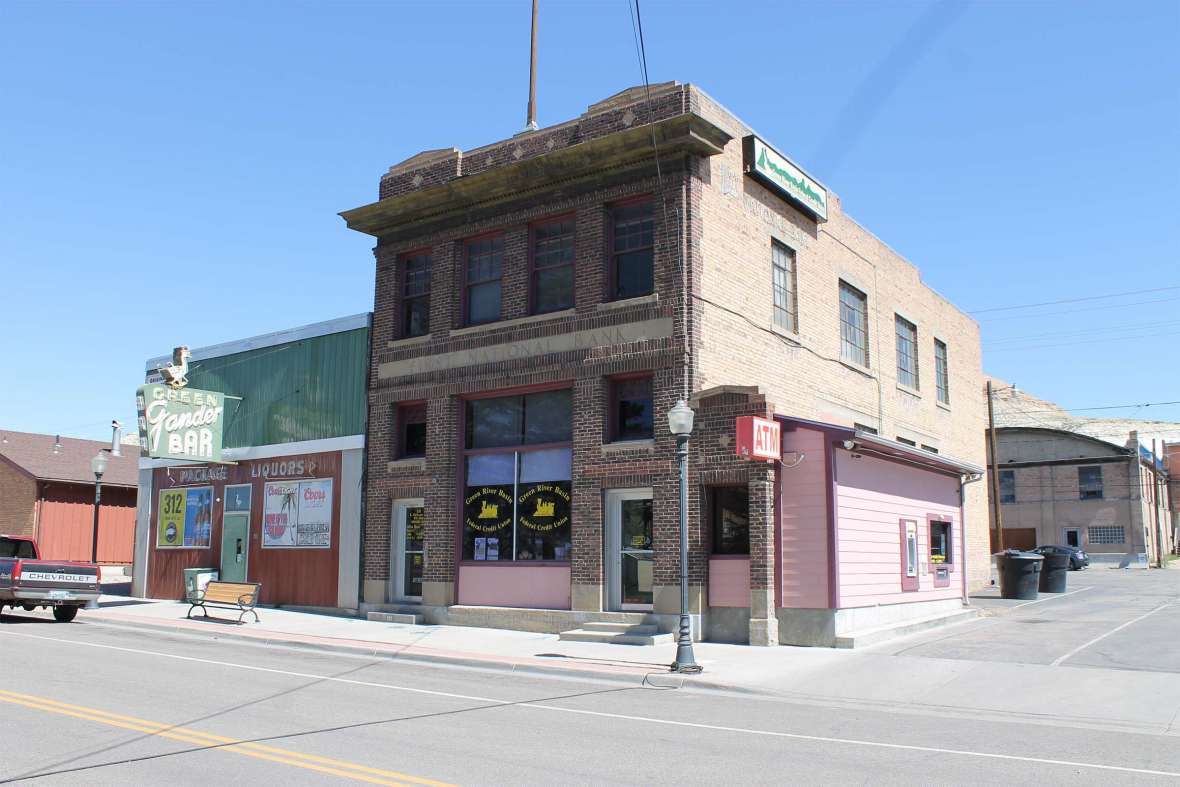
Resources
- Costin, James Ormsby. Grave marker, accessed Nov. 19, 2021 at https://www.findagrave.com/memorial/54007592/james-ormsby-costin.
- __________________. World War I Registration Card, Serial no. 2178, accessed March 19, 2020 at ancestry.com.
- __________________. World War II Registration Card, Serial no. 1996, accessed March 21, 2020 at ancestry.com.
- Kansas State Penitentiary. J.O. Costin Inmate File no. 5480. Kansas State Historical Society, Topeka, Kan.
Newspapers
- Casper Star-Tribune
- “Alleged Check Forger Figured in Bank Robbery.” April 9, 1943, accessed January 3, 2022 at https://www.newspapers.com/image/348230407.
- “Dealer in Forged Checks Sentenced to Seven Years,” May 16, 1943, accessed January 3, 2022 athttps://www.newspapers.com/image/348516821.
- Green River Star
(All viewed on microfilm copies from the Wyoming State Archives at the Sweetwater County Historical Museum.)- “Alleged Bank Robbers Put Under Heavy Bonds.” June 16, 1933.
- “Bank Robber James Costin May Have to Serve 2 Terms.” Jan. 27, 1934.
- “Bradbury Is Taken Into Custody By Sheriff Here.” April 21, 1933.
- “Costin Kidnap Trial Starts in Denver.” May 18, 1934.
- “Costin Is Suing Pocatello Mike For His Profits.” April 6, 1934.
- “Costin Tells of Being Held By Kidnap Gang.” April 6, 1934.
- “Filling Station Owner Robbed By Transient.” Jan. 12, 1934.
- “James Costin Breaks Jail Early Monday Morning.” Feb. 16, 1934.
- “Jury Renders Verdict of Grand Larceny on James Costin.” Jan. 26, 1934.
- “Kidnaping Of Costin Held As ‘Serious.’” July 20, 1934.
- “’Not Guilty’ Is Verdict Of Jury On Second Bank Hold-Up Suspect Here.” Jan. 19, 1934.
- “Officers In Hot Pursuuit [sic] of the Local Bank Bandits.” April 7, 1933.
- “Sensational Trial Of Bank Robbers Expected To End This Afternoon.” Jan. 12, 1934.
- “Sentencing of Charles Stoddard and Jas. Costin Postponed Until Feb. 26.” Feb. 9, 1934.
- “Sheriff Dankowski and William Evers Recapture Costin In Denver Hideout.” March 2, 1934.
- “Stoddard Is Sentenced to Five to Eight Years.” March 2, 1934.
- The Herald-Journal (Logan, Utah)
- “Convicted.” Aug. 24, 1948, accessed Jan. 3, 2022 at https://www.newspapers.com/image/636932179.
- Rock Springs Rocket
(All viewed on microfilm copies from the Wyoming State Archives at the Sweetwater County Historical Museum.)- “Costin Guilty in Green River Bank Robbery.” Jan. 27, 1934.
- “Huge Venire Is Drawn for Bank Robbery Trial.” Jan. 3, 1934.
- “J.O. Costing and Two Others Saw Way Out of County Jail.” Feb. 14, 1934.
- The Weekly Pioneer Times (Deadwood, South Dakota)
- “FBI Nabs Rapid Forgery Suspects.” Feb. 4, 1943, accessed Jan. 3, 2022 at https://www.newspapers.com/image/95209855.
- State of Wyoming vs. J.O. Costin, Harold A. Bradbury, and Charles Theodore Stoddard. Criminal Case File no. 1732, Sweetwater County, Wyo. Wyoming State Archives, Cheyenne, Wyo. (Hereafter WSA)
- State of Wyoming vs. Sam McCourt and James O. Costin. Criminal Case Files, Docket Book E, Case no. 1645. The Clerk of District Court, Sweetwater County, Green River, Wyo.
- United States Census 1930, Sweetwater County, Wyo. Green River Town, sheet 21, dwelling number 402 digital image, accessed March 19, 2020 at ancestry.com.
- Wyoming State Penitentiary. James O. Costin Inmate File no. 4817, WSA.
Secondary Sources
- Brown, Kathy. “April Fools bank robbery no joke to Taliaferro.” Green River Star, March 31, 1982.
- Burrough, Bryan. Public Enemies: America’s Greatest Crime Wave and the Birth of the FBI, 1933-1934. New York: The Penguin Press, 2004.
- “Services held for Taliaferro.” Obituary for Edward Ludwell Taliaferro. Green River Star, Aug. 29, 1987.
Illustrations
- The photo of the 1933 Reo is from Worldwide Auctioneers. Used with thanks.
- The mugshot of James Costin is from Wyoming State Archives. Used with permission and thanks.
- The rest of the photos are from the Sweetwater County Historical Museum. Used with permission and thanks.
